Benefits of Using Garnet Abrasive in the Construction Industry: Why We're Seeing a Major Industry Shift
The past decade has brought significant changes to how construction companies approach surface preparation. What started as scattered adoption by forward-thinking contractors has evolved into a widespread industry transition toward garnet abrasive. After working with construction teams across various sectors, we've observed this shift isn't just about following trends—it's driven by measurable performance improvements and regulatory necessity.
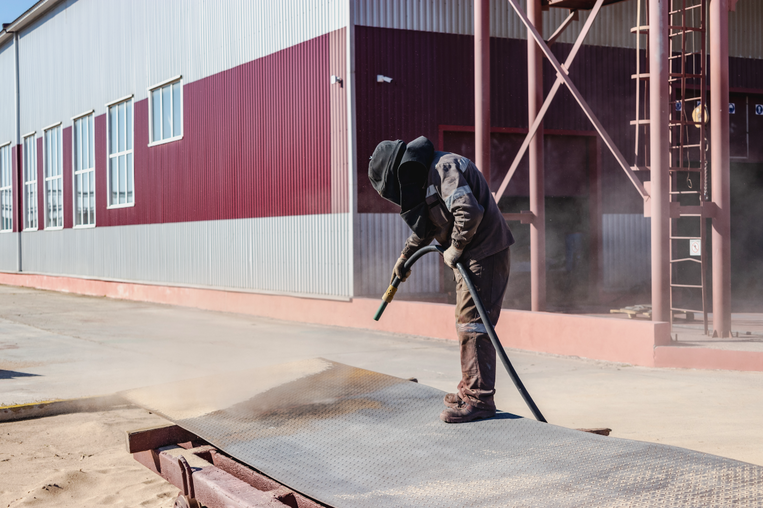
The Technical Reality Behind Garnet's Growing Adoption
Understanding why garnet works requires looking at its fundamental properties. With hardness ratings between 6.5 to 7.5 on the Mohs scale, garnet strikes an optimal balance that many contractors initially found surprising. It's aggressive enough to handle tough coating removal yet controlled enough for delicate restoration work. The almandine variety, which forms the backbone of most industrial garnet, consistently delivers this performance across different applications.
Most project managers we work with cite three immediate benefits: dramatically reduced dust levels, cleaner work environments, and the ability to reuse material multiple times.
Material Properties That Drive Performance:
Where Garnet Proves Its Value in Real Projects
Steel Infrastructure Preparation
Heavy industrial projects have provided some of the most compelling case studies for garnet adoption. Bridge rehabilitation contracts, where coating adhesion directly impacts service life, demonstrate garnet's ability to achieve consistent SA 2.5 to SA 3 cleanliness standards. The surface profile quality remains uniform across large areas, something that proves challenging with traditional abrasives.
One recurring observation from steel fabrication shops involves productivity improvements. Operators can maintain consistent work pace because they actually see what they're doing—no more working blind in dust clouds. This visibility factor translates to better quality control and fewer rework situations.
Concrete Surface Preparation Challenges
Concrete work presents unique challenges that highlight garnet's controlled cutting characteristics. Parking garage restoration projects, where substrate damage must be minimized, benefit from garnet's predictable removal rates. Unlike aggressive alternatives that can expose rebar or create weak spots, garnet allows precise control over material removal depth.
Bridge deck preparation represents perhaps the most demanding concrete application. The combination of traffic vibration, weather exposure, and structural loading requires surface preparation that enhances rather than compromises concrete integrity. Garnet's performance in these applications has led several state DOTs to specify it for major infrastructure projects.
Waterjet Cutting: Precision Requirements
The waterjet cutting segment operates under different performance criteria but demonstrates garnet's versatility. Precision cutting of reinforced concrete panels, architectural stonework, and complex steel fabrications requires consistent particle performance. The 80-mesh garnet used in these applications must maintain sharp cutting edges while producing minimal waste.
Manufacturing facilities cutting structural components report that garnet's angular particle shape provides superior cutting efficiency compared to recycled alternatives. The cost per cut becomes competitive when factoring in reduced material waste and consistent edge quality.
Historic Preservation: Where Precision Matters Most
Restoration projects offer perhaps the clearest demonstration of garnet's controlled performance. Historic courthouse cleaning, monument restoration, and heritage building maintenance require removing decades of contamination without damaging original surfaces. Traditional abrasives often prove too aggressive for carved details or weathered stone.
Conservation specialists working with 120-mesh garnet report successful removal of pollution staining, graffiti, and failed coatings while preserving original surface texture. This capability has made garnet the preferred choice for projects where surface damage would be irreversible.
Regulatory Drivers Behind the Transition
Silica Rule Implementation
The crystalline silica regulation fundamentally changed project economics for many contractors. With exposure limits set at 50 μg/m³ over an 8-hour period, compliance costs for traditional sandblasting operations became prohibitive on many projects. Garnet's low silica content (typically under 1%) eliminates most regulatory requirements while maintaining productivity.
Several contractors have reported that garnet adoption allowed them to bid competitively on projects where silica compliance would have made traditional methods uneconomical. The reduced need for extensive respiratory protection, medical monitoring, and exposure assessment creates measurable cost advantages.
Environmental and Disposal Considerations
Waste management requirements continue tightening across most jurisdictions. Garnet's recyclability addresses both disposal costs and environmental concerns. Quality material can cycle through 3-5 uses before becoming unsuitable for reuse, substantially reducing waste volumes compared to single-use alternatives.
The non-toxic classification simplifies disposal procedures when garnet finally reaches end-of-life. Unlike certain slag products or contaminated sand, spent garnet often qualifies for standard landfill disposal or beneficial reuse applications.
Technical Specifications: What Actually Matters in Practice
Mesh Size Selection Based on Application
Different project requirements dictate specific garnet grades, though some overlap exists:
20/40 mesh handles heavy coating removal and aggressive surface preparation. Ship repair, tank maintenance, and structural steel projects typically specify this grade for initial surface preparation phases.
30/60 mesh serves most general construction applications. Bridge work, building maintenance, and general steel preparation rely on this versatile grade for consistent performance across varied conditions.
80 mesh provides precision cutting in waterjet applications and fine surface preparation. Architectural projects, specialty fabrication, and delicate restoration work benefit from this controlled cutting action.
120 mesh addresses specialized restoration and finishing applications where surface damage must be minimized.
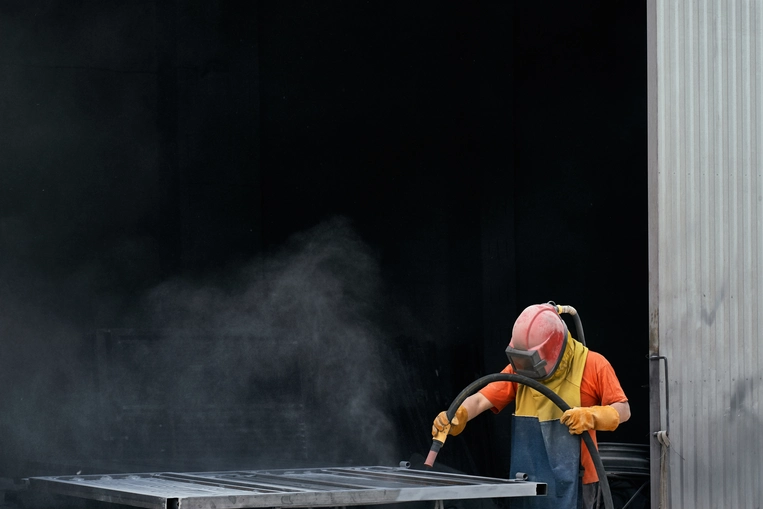
Quality Parameters That Affect Performance
Field experience has identified several specifications that directly impact project outcomes:
Chloride content must remain below 25 ppm for steel applications to prevent coating contamination. Premium grades achieve levels under 10 ppm, providing additional safety margins for critical applications.
Particle shape consistency affects cutting efficiency and reuse potential. Angular particles maintain cutting effectiveness longer than rounded alternatives, extending useful material life.
Hardness uniformity across batches ensures predictable performance. Variation in hardness leads to inconsistent cutting rates and unpredictable surface profiles.
Economic Analysis: Why the Numbers Work
Total Project Cost Comparison
Initial material costs represent only one component of total project economics. Comprehensive analysis must include labor productivity, disposal expenses, equipment maintenance, and regulatory compliance costs.
Recent project data indicates garnet typically costs 3-4 times more than silica sand initially. However, recycling capability effectively reduces this to roughly equivalent per-use costs. When factoring productivity improvements from better visibility and reduced cleanup requirements, total project costs often favor garnet by 10-20%.
Productivity and Efficiency Gains
Visibility improvements alone generate measurable productivity increases. Operators work more efficiently when they can see substrate conditions and coating removal progress. This translates to fewer missed spots, reduced rework, and better quality control throughout the project.
Equipment maintenance costs decrease due to reduced dust generation. Blast equipment operates longer between maintenance cycles, and dust collection systems require less frequent filter replacement. These operational improvements compound over multiple projects.
Supplier Selection and Quality Assurance
Ensuring Consistent Performance
Garnet quality varies significantly between suppliers and even between batches from the same source. Successful implementation requires suppliers who maintain consistent specifications through rigorous quality control procedures. This is where the consistent quality of Maxworth A1 garnet from batch to batch shines.
Technical Support and Application Guidance
Transitioning to garnet often requires adjustments to established procedures. Pressure settings, nozzle selection, and recycling procedures differ from traditional abrasive practices. Suppliers providing comprehensive technical support can significantly reduce implementation challenges and optimize performance.
Equipment modifications may be necessary to fully realize garnet's benefits. Dust collection systems, recycling equipment, and storage facilities designed for single-use abrasives may require upgrading to handle recyclable materials effectively.
Implementation Best Practices from Field Experience
Equipment Considerations and Modifications
Blast equipment designed for disposable abrasives often lacks adequate separation systems for recyclable materials. Upgrading to proper recycling equipment pays for itself quickly on larger projects but requires initial capital investment.
Dust collection becomes more critical with garnet, not because it produces more dust, but because capturing fine particles preserves the visibility advantage. Adequate collection systems maintain clear sightlines while protecting equipment and environment.

Safety Protocol Adaptation
Despite garnet's improved safety profile, comprehensive protective equipment remains necessary. However, reduced dust levels often allow for lighter respiratory protection and improved communication between team members.
Air quality monitoring requirements may be reduced, but baseline measurements should establish actual exposure levels for specific operations and equipment configurations.
Why Maxworth Minerals Has Invested in This Market
Our decision to focus on garnet supply reflects observed market trends and customer feedback over several years. Construction companies consistently report better project outcomes when using quality garnet, but they also emphasize the importance of reliable supply and technical support.
We've developed supply relationships with established IREL mining operation in India that provides consistent material quality and adequate volumes for large projects. Our quality control procedures ensure every shipment meets specified requirements for hardness, particle shape, and chemical composition.
Our Product Portfolio Includes:
Looking Forward: Garnet as Standard Practice
The transition to garnet represents more than just changing abrasive materials—it reflects the construction industry's evolution toward safer, more efficient, and environmentally responsible practices. Projects that once required extensive safety protocols and waste management procedures now operate with simplified requirements and improved performance.
For contractors still evaluating this transition, the question has shifted from whether garnet works to how quickly it can be implemented effectively. Early adopters have established competitive advantages through improved productivity, simplified compliance, and enhanced project quality.
As regulatory requirements continue evolving and environmental considerations become more prominent, garnet abrasive provides a proven solution that addresses both current needs and future requirements. The technology exists, the supply infrastructure is established, and the performance benefits are documented.
Contact our team to discuss how garnet abrasive can improve your surface preparation operations. We provide project-specific recommendations, cost analysis, and implementation support to ensure successful transitions and optimal performance for your specific applications.
Industries are switching to garnet abrasives for superior cutting, eco-friendliness,…
Sep 25, 2025
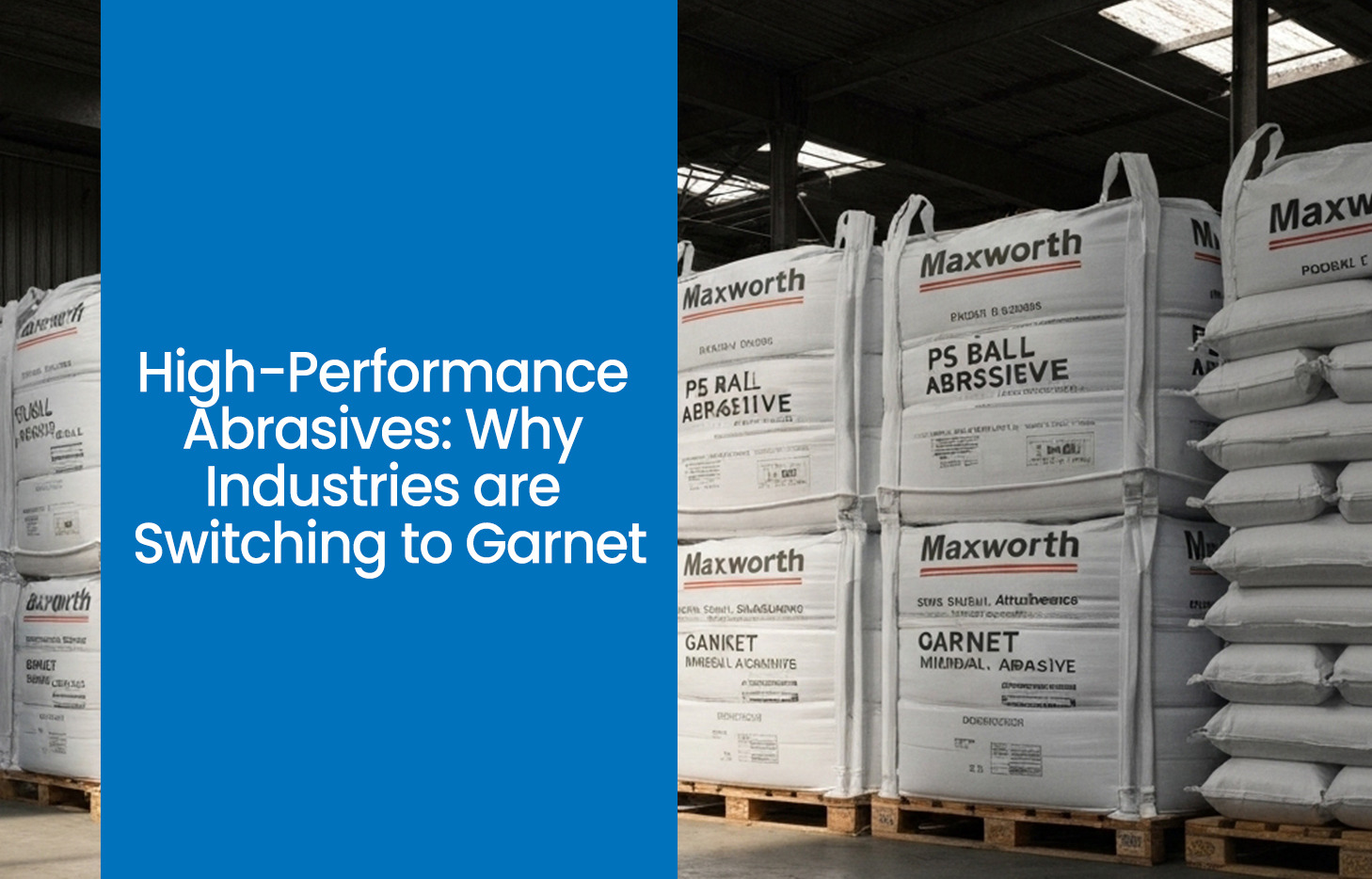
Garnet abrasive keeps surfaces clean, cuts dust and makes construction…
Sep 23, 2025

Garnet ensures smoother cuts, reduced costs, eco-friendly practices, and high-quality…
Sep 19, 2025
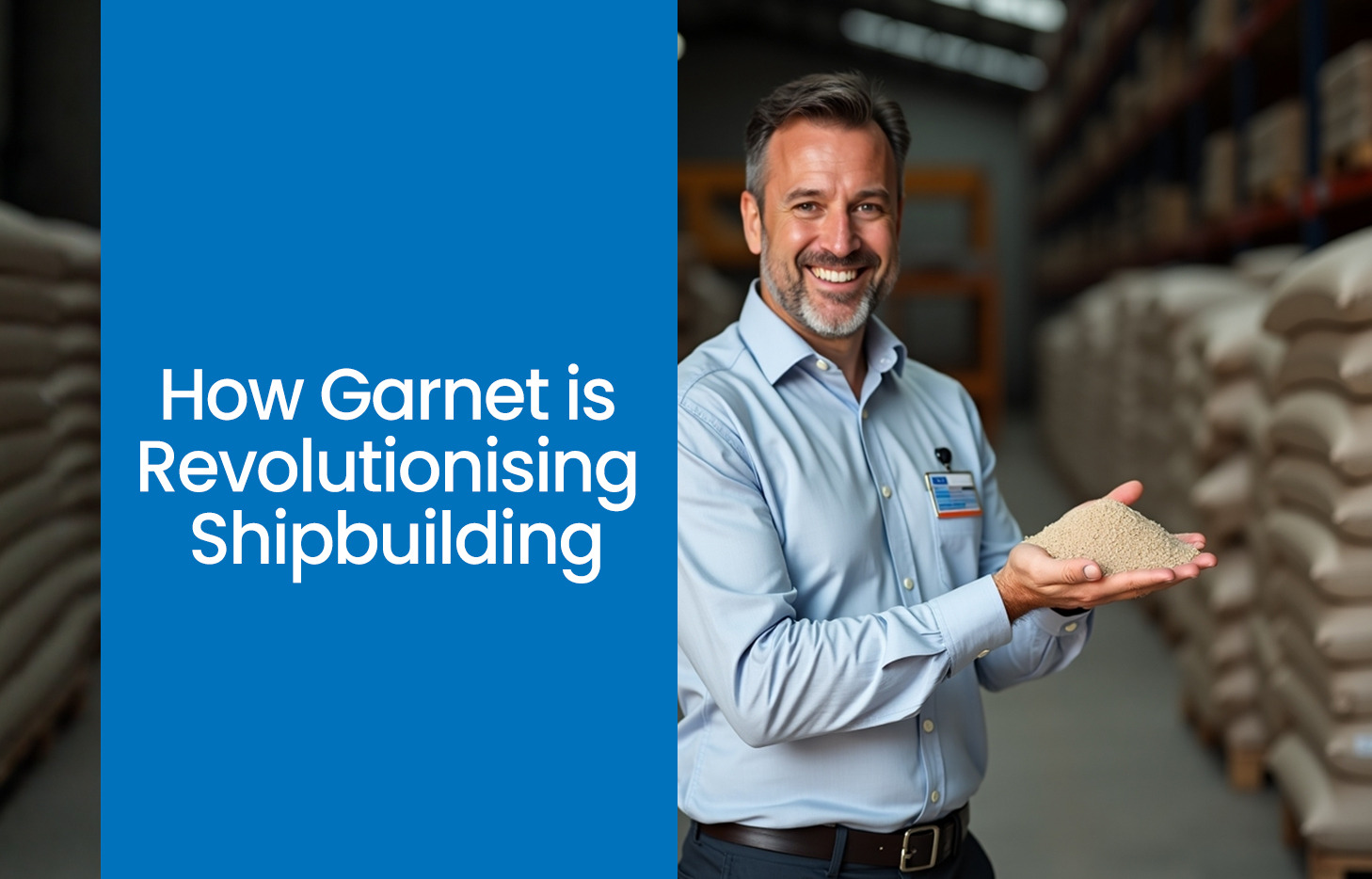
Shipbuilding endures saltwater, humidity, and stress, leading to corrosion. Regular…
Aug 22, 2025
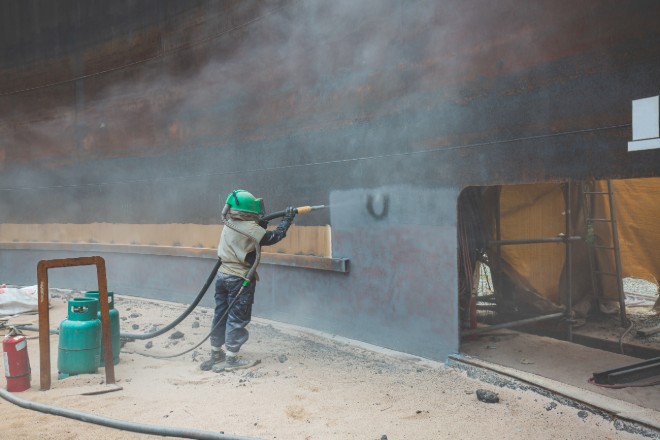
Sustainable minerals are those sourced and processed with minimal environmental…
Aug 18, 2025

Operations Division (+91 891 2572194)
Sales Division (+91 984 698 4668)
Sales Division (+91 781 596 1831)